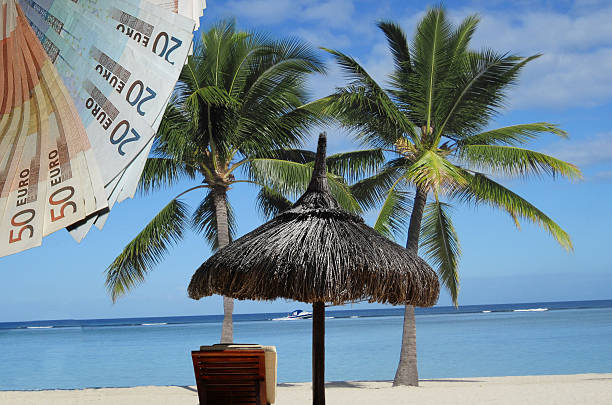You know that feeling? The one where your phone is buzzing, your inbox is overflowing, and the mental to-do list is scrolling through your head like a frantic news ticker. Now, imagine trading all of that for the gentle lap of water against a wooden hull, the scent of fresh pine carried on a cool breeze, and a horizon broken only by a distant island shrouded in mist.
That’s not just a daydream. It’s a real, tangible, and profoundly Finnish experience called veneajelu.
Frankly, we could all use a bit more of it. This isn’t just about boating; it’s a mindset. It’s the deliberate, almost sacred act of slowing down to become a part of the landscape, rather than just rushing through it. It’s about connection—with nature, with silence, and with the people you share the boat with.
So, what exactly is it that makes this Scandinavian concept so special, and how can you capture its essence, whether you’re on the lakes of Finland or your local waterway? Let’s cast off and find out.
If you plug “veneajelu” into a translator, you’ll get a mechanical, sterile answer: “boating excursion.” But that’s like calling a symphony “noise.” It completely misses the point.
The word itself is a compound of two Finnish words: venee (boat) and ajelu (driving or riding). But the cultural weight it carries is immense. Veneajelu is the antithesis of a high-speed, adrenaline-fueled jet ski ride or a crowded party cruise. It’s purposeful in its lack of purpose. The destination is often secondary to the journey itself.
It’s about gliding through a labyrinth of islands on a summer evening when the sun refuses to set. It’s about the ritual of brewing coffee on a small portable stove on a rocky islet you’ve got all to yourself. It’s about the quiet anticipation of waiting for a seal to pop its head above the water or an eagle to soar overhead.
In my conversations with Finnish friends, they describe it not as a hobby, but as a form of therapy. It’s their default setting for relaxation and recharging. It’s how families bond and how friends decompress. It’s a silent agreement to leave the rush on the shore.
Okay, that might sound like hyperbole, but hear me out. The benefits of this kind of immersive, slow travel are backed by more than just good vibes.
- Mental Decompression: The constant, gentle sensory input of water—known as “blue mind” theory—lowers stress hormones and lulls the brain into a state of calm awareness. Your phone has no service? Good. That’s the point.
- A Unique Perspective: You see a country from a completely different angle. Coastal villages, hidden coves, and wildlife that remains hidden from roadways are all revealed. It’s a reminder that not every beautiful path is paved.
- Genuine Connection: On a boat, distractions are minimal. Conversations flow more naturally. You’re working together to navigate, to choose a spot to drop anchor, to share a meal. It fosters a kind of teamwork and intimacy that’s hard to replicate elsewhere.
Honestly, this isn’t talked about enough in our goal-oriented society: the profound power of doing something for the sheer, unproductive joy of it. Veneajelu is the embodiment of that.
You don’t need to be a seasoned sailor or own a luxury yacht to embrace this philosophy. You just need a plan and the right mindset.
This is the most crucial decision, and it depends entirely on the type of water you’re exploring and your comfort level. The goal is to match the vessel to the experience you seek.
| Boat Type | Best For | The Vibe | Consider This |
|---|---|---|---|
| Small Open Motorboat | Protected lakes, calm archipelagos | Classic, simple, agile. Feels closest to the water. | Exposed to the elements. Limited space for longer trips. |
| Cabin Cruiser | Multi-day trips, larger lakes, coastal waters | Comfortable, with shelter and basic amenities. A floating cottage. | Requires more skill to handle and navigate. Higher cost. |
| Sailboat | Those who enjoy the journey as much as the destination | Silent, graceful, and deeply connected to wind and water. | Speed and route are weather-dependent. Steeper learning curve. |
| Canoe or Kayak | Solitude, narrow channels, absolute silence | The ultimate slow travel. Pure, muscular, and immersive. | Physically demanding. Very limited cargo capacity. |
For a first-time veneajelu, I’d usually recommend renting a small, easy-to-handle motorboat on a calm lake. It removes the pressure and lets you focus on the experience itself.
While spontaneity is key, a little preparation ensures safety and maximizes joy.
- Start Small: Don’t plan to circumnavigate an entire country on day one. Choose a small area with plenty of options for landing spots.
- Study the Charts: This isn’t just about not getting lost. Nautical charts show you hidden depths, interesting islands perfect for a stop, and potential hazards. Apps like Navionics are fantastic for this.
- Embrace the “Unessential Stop”: See a charming dock leading to a forest path? Go check it out. Spot a likely-looking fishing spot? Drop a line. This is the heart of veneajelu.
- Know Your Rules: Every country has boating regulations. Understand the right-of-way, required safety equipment (life jackets are non-negotiable!), and speed limits, especially near shores.
Packing light is part of the charm, but some items are crucial.
- Safety Gear: Life jackets for everyone, a first-aid kit, a whistle or horn, a flashlight, and a physical map/compass as a backup to electronics.
- The “Hyppy”: No, not a jump. A hyppy is the Finnish word for a dip in the water. So pack swimsuits and a quick-dry towel. The invigoration is unbelievable.
- Sustenance: This is sacred. A thermos of hot coffee, some grilled makkara (sausages) cooked over an open fire on shore, and perhaps a piece of pulla (Finnish cardamom bread). Keep it simple, keep it tasty.
- Layers, Layers, Layers: Weather on the water is fickle. Even on a sunny day, a breeze can pick up and make it chilly. Pack warm layers and a waterproof shell.
Let’s break this down clearly, because the distinction is important.
| Feature | Standard Boating | Veneajelu |
|---|---|---|
| Primary Goal | Destination, speed, water sports | The journey itself, relaxation, immersion |
| Pace | Fast, purposeful | Slow, meandering, flexible |
| Focus | Activity (tubing, skiing, fishing) | Experience (scenery, silence, connection) |
| Soundtrack | Loud music, engine roar | Water lapping, wind, birds, silence |
| Typical Vessel | Speedboat, pontoon, jet ski | Small motorboat, sailboat, kayak |
Some experts might disagree, but here’s my take: you can turn any boating trip into a veneajelu by simply shifting your mindset. It’s not about the boat; it’s about the ajelu—the ride.
1. Do I need a license to go on a veneajelu in Finland?
It depends on the boat’s engine power. For motorboats with an engine output exceeding 25 kW (about 33 hp), you need a valid boat driver’s license. For smaller engines or sailboats under a certain size, no license is typically required. Always check the latest local regulations before you go.
2. When is the best time for a veneajelu in Finland?
The high season is summer, from June to August, offering long days and the magical Midnight Sun. However, early autumn (September) can be stunningly beautiful with changing colors and fewer people, though the weather is cooler and less predictable.
3. What if I get seasick?
Start on very calm, sheltered waters like a small lake. Stay hydrated, look at the horizon, and avoid reading or looking at your phone. Ginger candies or over-the-counter medication can also help. Most people find their sea legs surprisingly quickly on gentle waters.
4. Is veneajelu a family-friendly activity?
Absolutely! It’s a fantastic family activity. The key is to keep trips short, pack plenty of snacks, and make sure children are always wearing properly fitted life jackets. Turning it into an adventure of exploring islands and spotting birds keeps everyone engaged.
5. Can I experience the essence of veneajelu if I don’t have access to a boat?
Yes, you can. While having your own vessel offers freedom, you can capture the spirit by taking a guided kayak tour, renting a rowboat for an afternoon on a local lake, or even taking a silent, mindful ferry ride where you focus solely on the scenery and not the destination.
6. Are there specific etiquette rules I should follow?
Yes, the main one is respect. Respect nature by taking all your trash with you. Respect homeowners by not landing on private docks without permission. Respect other boaters by minimizing your wake near smaller boats, docks, and the shoreline.
We’re all guilty of treating travel like a checklist. See the monument, snap the photo, move to the next spot. Veneajelu is the beautiful, Scandinavian-inspired antidote to that.
It’s an invitation to slow down. To understand that sometimes the most memorable part of a journey isn’t a landmark, but the quality of the light on the water at golden hour. It’s the taste of a simple sandwich that somehow tastes gourmet because you’re eating it on a rock in the middle of a lake.
So, the next time you feel the world spinning a bit too fast, remember the Finnish concept of veneajelu. Find your nearest body of water, find a vessel—any vessel—and go for a ride. Not to get somewhere, but to be somewhere.

